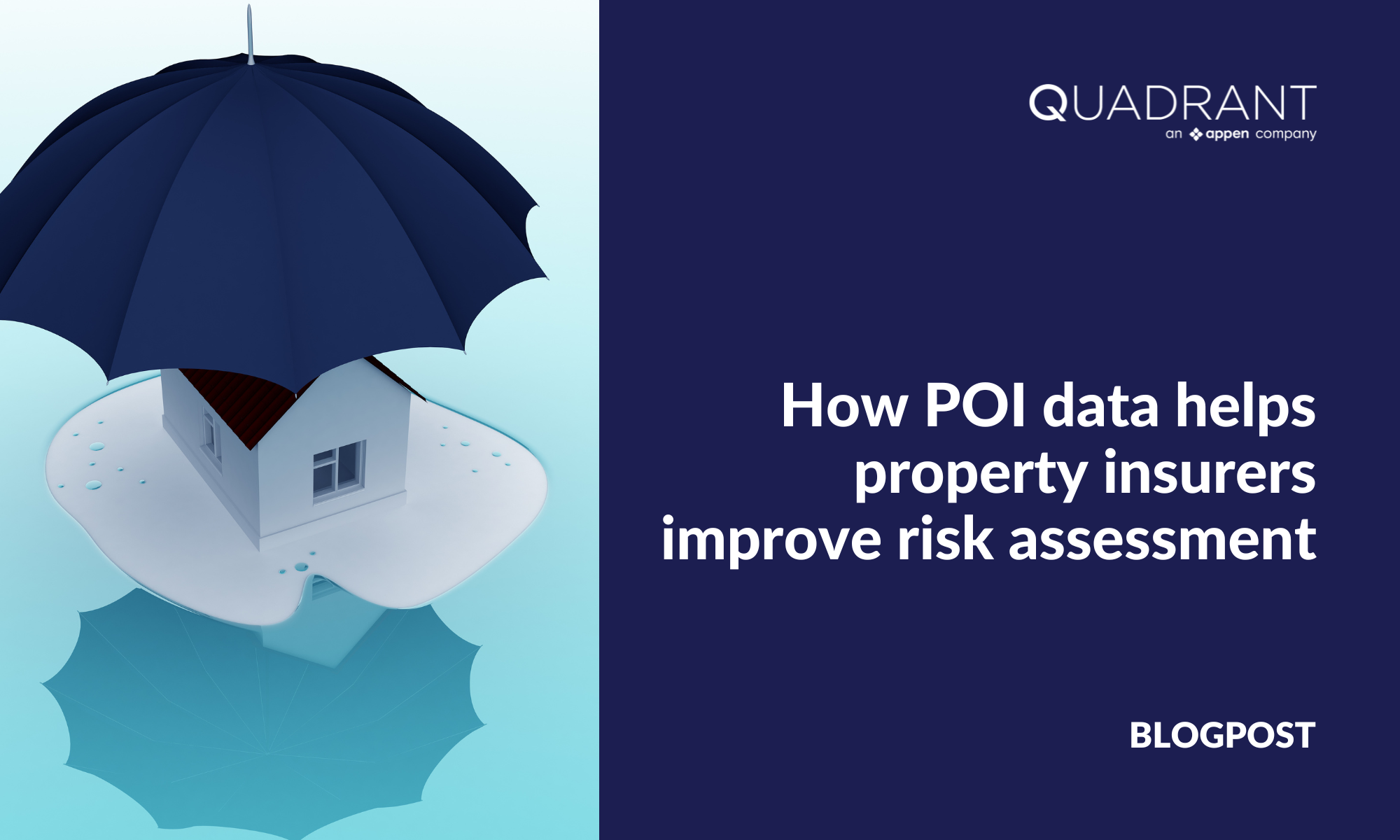In the insurance business, many decision-making processes hinge on location intelligence and real-world geospatial information. Point-of-Interest (POI) data in particular is used for building contextual profiles of neighborhoods and determining precise risk scores for commercial and residential properties - which enables the creation of better policies.
Many insurance businesses use satellite and aerial imagery to guide risk assessment and underwriting. However, neither of these tools can offer the comprehensive insights that can be unlocked through ground level geospatial data.

What is POI data and why is it valuable for insurance businesses?
POI data is the digital information on places in the physical world, such as coordinates, name, category, photographs, etc. This information is valuable for a myriad of geospatial applications. For insurance providers, attribute rich and up-to-date POI data is extremely important as it can highlight risk factors and changes in the urban environment.
Building neighbourhood profiles with Point-of-Interest data
Today’s urban landscapes are densely built and vulnerable to both natural and man-made disasters. Underwriters within the property insurance space need to take a multitude of factors into account when assessing risk. For example, understanding how susceptible a property is to fires, floods, earthquakes, or hurricanes. Insurance companies need detailed information on how close a home or business is to other premises that are at high risk.
Some of the risk assessment can be done by analysing events in the past. POI data allows underwriters to delineate the boundaries of a property by constructing precise polygons, and data from past disaster impact assessments can be overlayed on these to identify properties at high risk.
Another often-used method is building a map of potential risk factors and emergency services. For instance, up-to-date POI data can help identify properties close to high-risk operations like manufacturing plants, but far from fire stations.
How Geolancer can further improve underwriting
Geolancer, our proprietary POI Data-as-a-Service platform, allows businesses to collect custom metadata for each Point-of-Interest.
Within the context of the insurance industry, Geolancer can be used to collect information on the ground such as the availability of fire hydrants nearby a property, the presence of sprinkler systems on-site, or emergency evacuation plans being on display. This leads to a much more granular understanding of the risk profile of individual properties. Moreover, by collecting such metadata, insurance companies can recommend simple interventions to their clients to reduce risk – thereby decreasing their own exposure.
Further improve risk assessment with mobile location data
Augmenting Point-of-Interest data, insurance companies can also consider using mobile location data. While POI data gives us information about places in the physical world, mobile location data informs us about the distribution and movement patterns of people within and between POIs. Anonymized mobile location data can be used to assess risk by understanding footfall patterns at a specific location. Footfall and visitation patterns shed light on popularity, average dwell time of visitors, and distribution of visitors by time of day and week.
Such mobility-based intelligence allows commercial property insurers to improve their estimations for potential liabilities and risk factors. This information results in data-driven insurance policies that are more profitable and allow insurance buyers to understand the need for safety and preparedness.
POI data is a great tool for property insurers for several reasons. Quadrant’s standard, off-the-shelf POI solution gives underwriters the critical property information they need to execute more holistic risk assessments. Additionally, our higher-tier solution – Geolancer – allows them to procure quality, custom metadata that further improves their knowledge of potential vulnerabilities. As a result, insurers can model risk effectively and implement a pricing strategy that gives them a competitive advantage.




